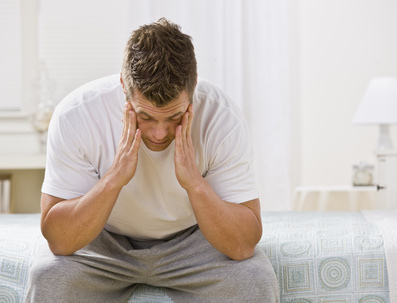
Image Source: Pixabay
High humidity is not just uncomfortable — it can actually affect your health. With something that’s easy to control inside the home, why risk your well-being at all? Here are the five main hazards brought on by high humidity levels.
Airborne Bacterial Infections

Image via Flickr by Mic445
Certain diseases, like pneumonia and tuberculosis, are spread through the air. Even though little is known about the effect of relative humidity on pathogenic (or disease-causing) bacteria, several nonpathogenic bacterial species are known to have a lower survival rate at humidity levels between 40 to 60 percent than at higher humidity levels.
Furthermore, when these bacteria are present in the air, the likelihood of becoming infected depends on factors like the length of exposure and the ventilation rate. The best way to avoid spreading such infections in your home is to lower the humidity and add proper ventilation systems. (See also: Controlling Humidity Indoors To Improve Your Family’s Health)
Allergy Exacerbation
Mites and fungi are two of the major causes of allergies. Mites are the main cause of house dust allergies, and studies have found that some mites reach their maximum size at a relative humidity of 80 percent. At 50 percent relative humidity, they are non-existent.
Fungi are known to cause allergic reactions to patients suffering from asthma or rhinitis, but they also cause hypersensitivity reactions to non-allergic people. Relative humidity has been demonstrated to positively correlate with growth and sporulation of several of these fungi, mainly in kitchens and bathrooms. For this reason, it’s imperative to place exhaust fans in these areas and repair any leaky faucets.
Concentration of VOCs
Volatile organic compounds (VOCs) can lead to symptoms such as headaches, fatigue, dizziness, allergic skin reactions, or nausea. VOCs exist everywhere — including paint, carpets, wood, and air fresheners — and high humidity is known to increase the release of these compounds into the air.
If you have filters in your house to prevent VOCs from entering the air, know that their performance is hindered by high relative humidity. So in addition to reducing humidity, make sure to frequently change your air filters.
Exposure to Other Harmful Chemicals
Other water-soluble compounds, such as formaldehyde, or water-reactive chemicals, like sulfur and nitrogen dioxides, are irritants to the respiratory tract and can cause other allergies. Using a dehumidifier can help you keep natural and healthy relative humidity levels, leading to lower concentrations of these compounds in your home.
Hindered Ability of the Body to Cool Down
Our bodies sweat in the heat to cool down. However, this cooling effect takes place not through the sweat formation itself, but by its evaporation. Higher relative humidity means that the air is already closer to water saturation. This means the water in our sweat will have a harder time evaporating, making it harder for you to cool down. Not only is it uncomfortable to be sweaty, but the body can have adverse reactions, such as heat cramps, heat exhaustion or heatstrokes. You will cool down faster and avoid these symptoms by having drier air in your home.
Controlling your home air relative humidity may be the difference between being healthy or not, so don’t overlook this when taking care of your home and family.
About The Author:
Ryan is a freelance writer primarily focusing on tech and health topics. When she’s not writing, she enjoys going to the beach and spending time with her family.




